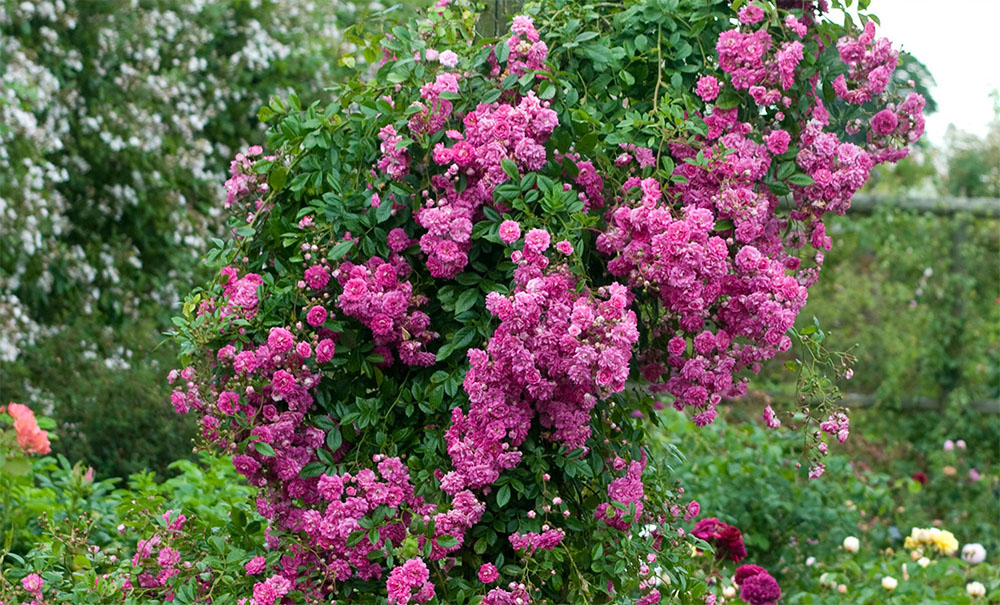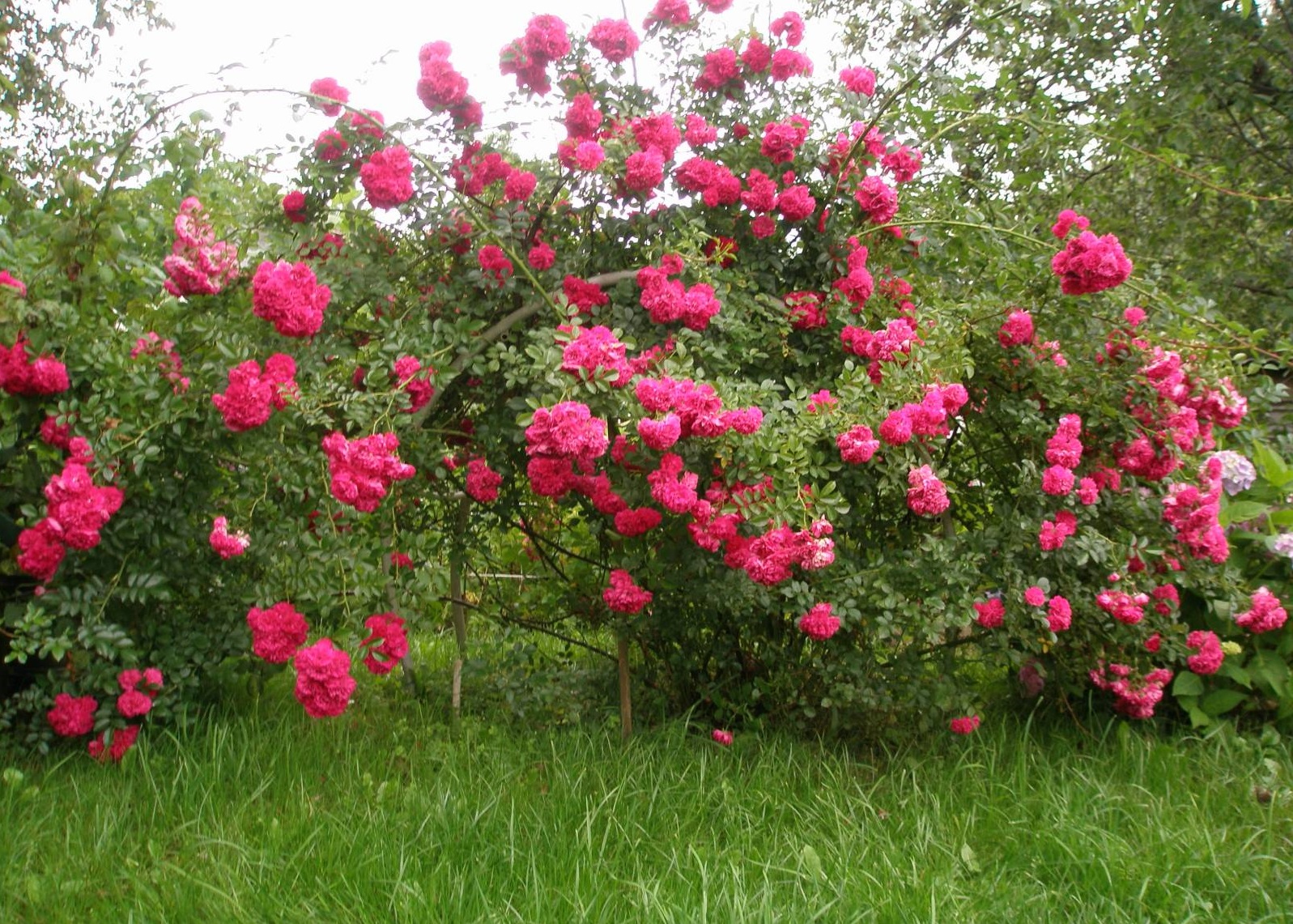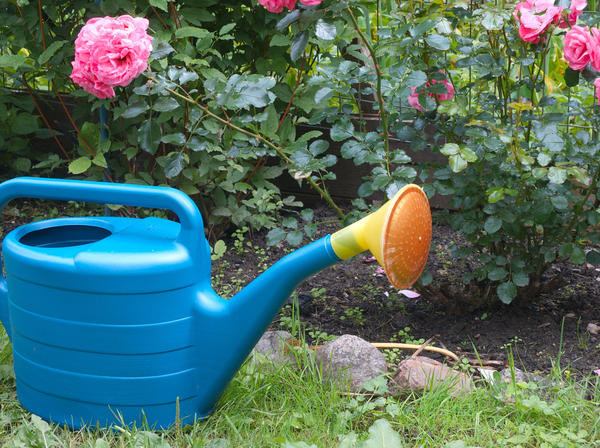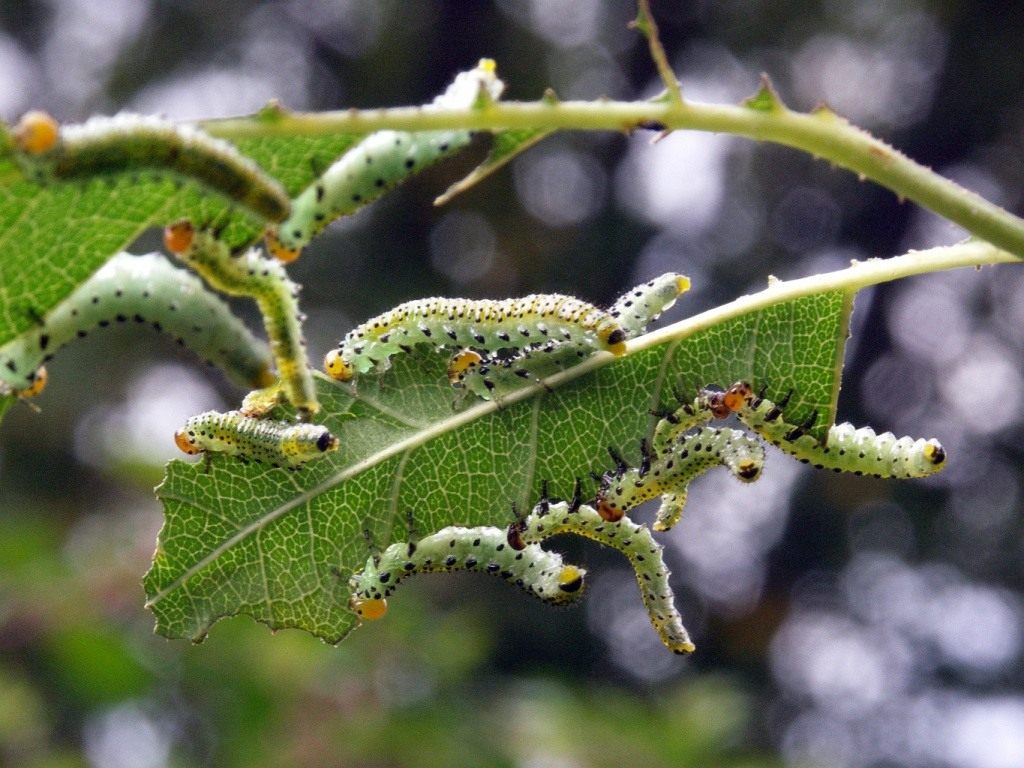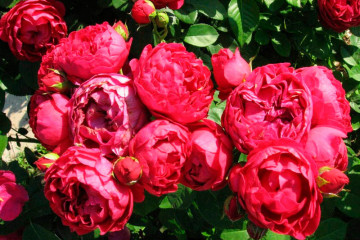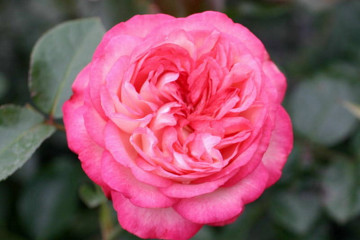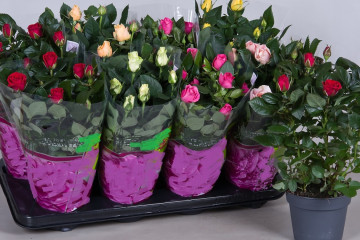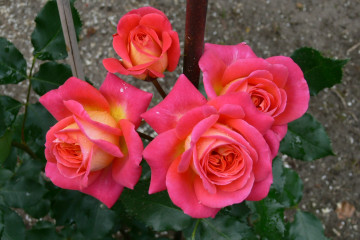Rose Super Dorothy (Super Dorothy) - what kind of re-flowering variety
Content:
Super Dorothy Rose is a popular crop that is popular with flower growers. The plant is decorated with a large number of large inflorescences that remain almost until the end of autumn. The flower is characterized by ease of care and disease resistance.
Rose Super Dorothy (Super Dorothy) - what kind of variety, history of creation
Super Dorothy rose appeared thanks to the efforts of the German breeder K. Hentzel in 1986. In fact, it is an improved version of the Dorothy Perkins variety, which is characterized by low resistance to powdery mildew. We managed to remove this minus. Also, the breeder gave the culture a richer color and increased the duration of flowering.
Brief description, characteristic
The climbing rose Super Dorothy is characterized by dark pink pompom flowers. One brush contains 25-40 buds. Flowering begins quite late - in the second half of summer. However, it lasts almost until the coldest days. Under the influence of the sun, bright petals take on a paler hue. The rose has a vanilla aroma.
The plant has a spreading bush with a lot of shoots. It reaches 3 m in height and 1 m in width. The plant is characterized by medium-sized dark green leaves with a glossy surface. It has soft pliable shoots that are easily located on a support.
In the description of the rose variety, it is indicated that it has a stable immunity to powdery mildew and black spot. Under cover, the plant is able to withstand frosts down to -25 ℃. When growing crops in regions with mild climates, shelter is not required.
Advantages and disadvantages of the variety
Rose Dorothy is very popular. This is due to its positive qualities:
- long flowering until the end of autumn;
- small buds that are constantly changing;
- resistance to major diseases;
- resistance to prolonged rains;
- high resistance to frost.
A small flaw is also characteristic of a rose - a change in the shade of the buds as it blooms. At first they have a bright and rich color. The flowers gradually become pale and less decorative.
Use in landscape design
Like other ground cover crops, the Super Dorothy rose is often used in landscaping. It is often planted in rose gardens and greenhouses. The culture is used to decorate verandas, walls of buildings, gazebos. Also, bushes can be grown on a trunk.
Growing a flower, how to plant it in open ground
The Super Dorothy plant is characterized by good development. With proper planting work, it will be possible to achieve abundant flowering.
In what form is the landing
The plant takes root well in open soil and develops well. At the same time, you need to prepare a suitable site for him and choose high-quality seedlings. For planting, it is recommended to use a strong and healthy seedling with 3-4 powerful shoots. It is important to ensure that the roots are well developed.
What time is the boarding
In areas with a warm climate, it is permissible to plant a rose from November to March, since the earth retains warmth in the depths. In cold regions, planting work is carried out from April to the end of October.
Location selection
The plant requires a sunny area that is reliably protected from drafts and wind. To protect the crop from weeds, it is recommended to cover the place for the rose with a mulch layer. To make the site more decorative, it is worth using needles, fallen leaves, mowed grass.
How to prepare the soil and flower for planting
Before planting in open ground, the roots should be trimmed by a third and immersed in a growth stimulant solution. In the ground, make a recess 60-70 cm in diameter. Peat, sand and humus are introduced into it. To reduce the acidity parameters, 200 g of ash are used.
Planting procedure step by step
In order for the plant to develop well, you need to correctly perform planting work:
- put the seedling in the groove - it is recommended to place it at an angle;
- sprinkle the roots with earth;
- deepen the root collar by 9-10 cm;
- lightly tamp and water the soil.
Plant care
To obtain lush flowering, the plant must be properly cared for. To do this, water and feed the bushes on time.
Watering rules and humidity
The plant needs systematic watering at least once a week. It is recommended to moisten the soil with warm, settled water. Water the soil in the evening. At the same time, water is poured under the root avoiding contact with flowers. To keep the soil moist, it is covered with mulch.
Top dressing and soil quality
Fertilizers should be applied on the second day after planting. It is recommended to start feeding the bushes in early spring. At this stage, nitrogen fertilizers are used. After 2 weeks, add mullein or bird droppings.
It is recommended to add mineral products containing potassium, phosphorus, magnesium every 2 weeks. Superphosphate is used in August.
Pruning and replanting
Cutting off the shoots of the plant is necessary for their rapid development. In addition, the procedure helps to give the bush a beautiful and unusual shape. Shoots are cut 5 mm above the bud, cutting at an angle. Dry and damaged branches are removed.
Features of wintering a flower
If a harsh winter is expected, it is recommended to insulate the bushes. To do this, the shoots should be removed from the support and carefully laid on straw, boards or slate. It is best to use spruce branches for this purpose. It helps the plant breathe.
A non-woven fabric should be placed on top of the branches. Then the bush needs to be spud, raising it by 30-40 cm. The procedure is carried out if the temperature is less than -10 ℃.
Blooming rose
The plant is characterized by lush and abundant flowering. During this period, the culture needs specific care.
A period of activity and rest
Roses bloom from early summer to late autumn. At the same time, the flowers are being updated all the time. Old buds fade and crumble, while young ones bloom.
Care during and after flowering
A flowering plant requires systematic fertilization.It is recommended to apply a mineral remedy every 2 weeks. Withered buds are removed in time. Weak stems are cut. After flowering is complete, remove all leaves and branches.
What to do if it does not bloom, possible reasons
If there is no flowering, you need to establish the causes of the problems. Usually they are associated with the close arrangement of bushes to each other or insufficient soil fertility. In such a situation, the flower should be moved to a more nutritious soil. The lack of flowering is often due to excess nitrogen fertilization.
Flower propagation
The plant can be propagated by cuttings. Also, this procedure is carried out using layering.
When is it produced
Cuttings are recommended to be harvested in June or early July. Layers are made at any time during the flowering period.
Detailed description
To propagate a culture by cuttings, do the following:
- Cut off the branch that has just faded. It is divided into fragments 10-12 cm in size.
- Prepare the beds and make depressions. Cuttings are placed in them so that the earth reaches the middle of each of them.
- Cover the beds with foil. In this form, the cuttings should survive 2 winters.
- In the third year, it will be possible to get permanent seedlings, which are moved to a permanent flower bed.
To propagate a plant by layering, you must do the following:
- Make a small narrow ditch near the flowering bush.
- Take a side branch into it and sprinkle it with earth.
- Secure with a wooden peg.
- Shelter for the winter.
- After the roots appear, separate the fragment and transplant it separately.
Diseases, pests and ways to control them
Most often, the culture suffers from aphid attacks. To cope with these pests, you can use aktara, actellik. In hot and dry weather, the bushes infect spider mites. They must be washed off with water and use drugs such as Aktofit, Acrex.
This rose has excellent decorative properties. To succeed in growing a crop, you need to provide it with comprehensive care. It should include fertilizing, watering, pruning.
